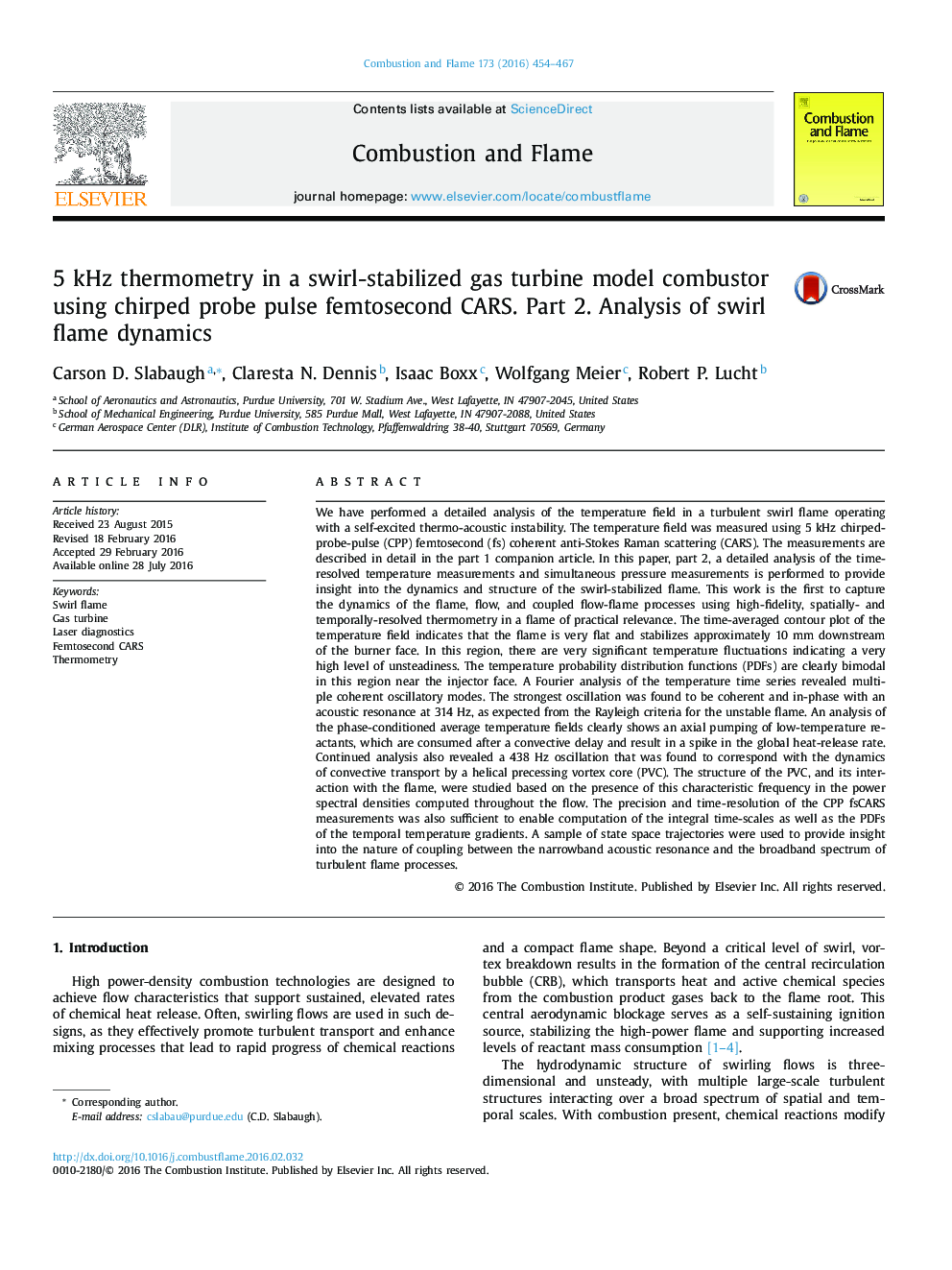| کد مقاله | کد نشریه | سال انتشار | مقاله انگلیسی | نسخه تمام متن |
|---|---|---|---|---|
| 6468400 | 1423564 | 2016 | 14 صفحه PDF | دانلود رایگان |
عنوان انگلیسی مقاله ISI
5 kHz thermometry in a swirl-stabilized gas turbine model combustor using chirped probe pulse femtosecond CARS. Part 2. Analysis of swirl flame dynamics
دانلود مقاله + سفارش ترجمه
دانلود مقاله ISI انگلیسی
رایگان برای ایرانیان
کلمات کلیدی
موضوعات مرتبط
مهندسی و علوم پایه
مهندسی شیمی
مهندسی شیمی (عمومی)
پیش نمایش صفحه اول مقاله

چکیده انگلیسی
We have performed a detailed analysis of the temperature field in a turbulent swirl flame operating with a self-excited thermo-acoustic instability. The temperature field was measured using 5 kHz chirped-probe-pulse (CPP) femtosecond (fs) coherent anti-Stokes Raman scattering (CARS). The measurements are described in detail in the part 1 companion article. In this paper, part 2, a detailed analysis of the time-resolved temperature measurements and simultaneous pressure measurements is performed to provide insight into the dynamics and structure of the swirl-stabilized flame. This work is the first to capture the dynamics of the flame, flow, and coupled flow-flame processes using high-fidelity, spatially- and temporally-resolved thermometry in a flame of practical relevance. The time-averaged contour plot of the temperature field indicates that the flame is very flat and stabilizes approximately 10 mm downstream of the burner face. In this region, there are very significant temperature fluctuations indicating a very high level of unsteadiness. The temperature probability distribution functions (PDFs) are clearly bimodal in this region near the injector face. A Fourier analysis of the temperature time series revealed multiple coherent oscillatory modes. The strongest oscillation was found to be coherent and in-phase with an acoustic resonance at 314Â Hz, as expected from the Rayleigh criteria for the unstable flame. An analysis of the phase-conditioned average temperature fields clearly shows an axial pumping of low-temperature reactants, which are consumed after a convective delay and result in a spike in the global heat-release rate. Continued analysis also revealed a 438Â Hz oscillation that was found to correspond with the dynamics of convective transport by a helical precessing vortex core (PVC). The structure of the PVC, and its interaction with the flame, were studied based on the presence of this characteristic frequency in the power spectral densities computed throughout the flow. The precision and time-resolution of the CPP fsCARS measurements was also sufficient to enable computation of the integral time-scales as well as the PDFs of the temporal temperature gradients. A sample of state space trajectories were used to provide insight into the nature of coupling between the narrowband acoustic resonance and the broadband spectrum of turbulent flame processes.
ناشر
Database: Elsevier - ScienceDirect (ساینس دایرکت)
Journal: Combustion and Flame - Volume 173, November 2016, Pages 454-467
Journal: Combustion and Flame - Volume 173, November 2016, Pages 454-467
نویسندگان
Carson D. Slabaugh, Claresta N. Dennis, Isaac Boxx, Wolfgang Meier, Robert P. Lucht,